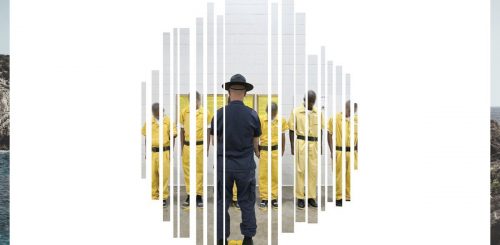
Get Your Soundtrap for Education Proposal Approved
August 13, 2025Want your administrator to say 'yes' to Soundtrap for Education? This practical guide shows you exactly how to frame your case - linking creativity to district priorities, budgets, and measurable student outcomes.
You know that feeling when you discover a tool that could transform your classroom but then you remember you need approval first? We’ve all been there. You see the potential, but now you need to translate that vision into language that resonates with district priorities and budget realities.
This guide will help you frame Soundtrap for Education in ways that administrators understand and value, connecting student creativity to the standards, outcomes, and fiscal responsibility that drive their decisions.
Table of Contents
- Speaking Your Administrator’s Language
- Soundtrap Across Every Subject
- Proven Talking Points for Different Scenarios
- Do’s and Don’ts for Administrator Conversations
- Addressing Common Administrator Concerns
- Building Your Proposal
- Sample Email to Your Administrator
- Frequently Asked Questions
- Your Next Steps
Speaking Your Administrator’s Language
Start with Shared Challenges
“We’re all seeing the same challenge – students who disengage from traditional assignments but come alive when they can demonstrate learning differently. Our district prioritizes the 4Cs and career readiness, and I’ve found a tool that delivers both while staying within our budget constraints.”
Connect to District Priorities
Administrators think in terms of district-wide impact, standards alignment, and measurable outcomes. Here’s how to position Soundtrap for Education:
For Standards Alignment: “This isn’t just creative technology – it’s a curriculum integration tool that helps students meet literacy, STEM, and social studies standards through audio creation.”
For Budget Justification: “Soundtrap can serve multiple subjects and teachers, maximizing our technology investment across the entire curriculum.”
For Career Readiness: “Students develop communication, collaboration, and digital media skills that employers actively seek – the same skills our CTE programs aim to build.”
Soundtrap for Education: Across Every Subject
Show administrators how one tool supports multiple curricular areas:
| Subject Area | Project Example | Standards Met | Skills Developed |
|---|---|---|---|
| ELA | Audio storytelling with character analysis | Reading comprehension, narrative writing | Critical thinking, presentation skills |
| Social Studies | Historical event podcasts with primary source interviews | Research skills, historical thinking | Communication, source evaluation |
| STEM | Audio lab journals explaining experiment processes | Scientific method, data analysis | Problem-solving, technical communication |
| Music | Collaborative compositions connecting to other subjects | Music theory, ensemble skills | Creativity, teamwork, digital literacy |
Proven Talking Points for Different Scenarios
When Budget is the Primary Concern
“This investment serves multiple teachers and subjects simultaneously. Instead of purchasing separate tools for creative writing, presentation skills, and music production, Soundtrap addresses all three areas. The per-student cost is comparable to a single textbook, but it serves students across multiple classes for the entire year.”
When Engagement is the Focus
“Remember Maria’s 8th graders who wouldn’t write essays? Last semester, those same students created 15-minute historical podcasts with primary source interviews. They were conducting graduate-level research without realizing it – because audio removed the barrier while maintaining academic rigor.”
When Equity Matters Most
“Every learner can demonstrate what they know. Students who struggle with written expression excel at verbal explanation. English learners record in their native language first, then translate. Students with writing challenges create detailed audio analyses that reveal deep understanding we never saw before.”
When Standards Pressure is High
“This directly supports our literacy goals. When students create podcasts, they’re practicing research, script writing, revision, and presentation – all core ELA standards. When they explain STEM concepts aloud, they’re demonstrating understanding in real-time, giving us better assessment data than traditional tests.”
Do’s and Don’ts for Administrator Conversations about Soundtrap for Education
Do:
- Lead with curriculum connections, not creative features
- Share specific student success stories from your district context
- Mention professional development and implementation support
- Connect to existing funding sources (CTE, arts, instructional technology)
- Offer to pilot with measurable outcomes
Don’t:
- Start with music production capabilities unless speaking to arts administrators
- Overwhelm with technical features
- Promise unrealistic transformation timelines
- Compare negatively to current tools or methods
- Underestimate implementation planning needs
Addressing Common Administrator Concerns
“How do we know students will actually learn more?”
“Students demonstrate understanding through audio in ways we never see in traditional assessments. Teachers report discovering student insights they didn’t know existed – particularly from quiet learners and English language learners who excel verbally but struggle with written formats.”
“What about teacher training and support?”
“Soundtrap includes curriculum-aligned lesson plans and project templates. Teachers aren’t starting from scratch – they’re adapting proven strategies that connect to standards we’re already teaching. The learning curve is minimal because it builds on familiar pedagogical approaches.”
“Is this just another technology fad?”
“Audio creation teaches timeless communication skills through current technology. Students learn research, organization, presentation, and revision – the same skills we’ve always valued, just delivered through a medium that engages them and prepares them for modern workplace communication.”
“How does this fit our existing curriculum timeline?”
“Teachers integrate audio projects into existing units rather than adding new content. A social studies research paper becomes a research podcast. A science lab report becomes an audio explanation. We’re enhancing what you’re already doing, not replacing it.”
Building Your Proposal
Include This Supporting Information:
Standards Alignment Document: Show exactly how audio projects meet state standards across multiple subjects.
Budget Analysis: Compare the cost per student to other instructional materials, highlighting multi-subject usage.
Implementation Timeline: Realistic plan for rollout, training, and evaluation.
Success Metrics: How you’ll measure impact on student engagement, achievement, and skill development.
Pilot Proposal: Offer to start small with measurable outcomes before district-wide adoption.
Sample Email to Your Administrator
Subject: Cross-Curricular Tool Supporting Our Literacy and Career Readiness Goals
Hi [Administrator Name],
I’ve discovered a tool that addresses two challenges we discussed at our last curriculum meeting: student engagement in research projects and authentic assessment across subjects.
Soundtrap for Education enables students to create podcasts, audio stories, and collaborative projects that directly support our literacy standards while building the communication skills our CTE programs target. It serves multiple subjects and provides professional development support.
I’d love to show you examples of how other districts use this for social studies research, STEM explanations, and ELA storytelling – all connecting to the standards we’re already teaching.
Would you have 15 minutes next week to see how this could support our academic goals while staying within budget constraints?
Thanks, [Your name]
Buying Soundtrap for Education: Frequently Asked Questions
Pricing and Plans
Q: What does Soundtrap for Education actually cost?
A: Soundtrap for Education is priced at $8-10 per student annually, depending on your district size and subscription length. This cost is comparable to a single textbook but serves students across multiple subjects throughout the year.
Q: Are there different plan options for different needs?
A: Yes, Soundtrap offers flexible plans designed for educational settings. The Education plan includes classroom management tools, privacy controls, curriculum-aligned lesson plans, and premium audio features. Volume discounts are available for district-wide implementations.
Q: How does pricing compare to other educational technology tools?
A: Soundtrap costs less than most comprehensive educational software while serving multiple subject areas. Unlike single-purpose tools, this investment supports ELA, social studies, STEM, music, and world language curricula simultaneously.
Q: Can we pilot with a smaller group before committing district-wide?
A: Absolutely. Many districts start with pilot programs – perhaps one grade level or a handful of teachers. This allows you to demonstrate measurable impact before expanding, making the full investment easier to justify.
Ordering and Procurement
Q: How do we actually purchase Soundtrap for our district?
A: The procurement process is straightforward. Districts can purchase directly through Soundtrap’s education team, work with approved educational resellers, or use existing technology contracts. The sales team handles quotes, purchase orders, and works within your district’s procurement timeline.
Q: What information do we need to provide for a quote?
A: You’ll need approximate student count, desired subscription length (1-year, 2-year, or 3-year options available), and any specific implementation timeline requirements. Complete this quote request form and you’ll get a custom generated quote in minutes.
Q: Can this be funded through existing budget categories?
A: Yes, districts successfully fund Soundtrap through various budget lines including instructional technology, CTE programs, arts education, literacy initiatives, and general curriculum budgets. The cross-curricular nature makes it eligible for multiple funding sources.
Q: What’s included in the implementation process?
A: Depending on your purchased plan and included add-ons, implementation includes account setup, teacher training sessions, curriculum integration support, and ongoing technical assistance. The education team provides onboarding timelines that work with your district calendar and professional development schedule.
Technical and Administrative
Q: How does this integrate with our existing technology systems?
A: Soundtrap integrates with Google Classroom, Microsoft Teams, Canvas, Clever, Classlink and other common learning management systems. IT setup is minimal – it’s a web-based platform that works on any device with internet access, including Chromebooks, iPads, and standard computers. Note: LMS integration availability varies depending on your purchased plan.
Q: What about data privacy and student safety?
A: Soundtrap for Education is FERPA and COPPA compliant with robust privacy protections. Student accounts are private by default, teachers control all sharing permissions, and no personal information is required for student accounts. All data is stored securely and not used for advertising. For more information, see our Privacy Policy and Terms of Service (US version | Rest-of-World Version ).
Q: Do teachers need extensive training to use this effectively?
A: No. Most teachers are creating meaningful projects within their first week. Soundtrap provides curriculum-aligned lesson plans, project templates, and step-by-step guides. Professional development can be completed in 2-3 hours, with ongoing support available as purchased add-ons.
Q: What kind of ongoing support is available?
A: Districts receive dedicated education support including live training sessions, curriculum consultation, technical troubleshooting, and regular check-ins when purchasing add-on packages. The education team understands school schedules and provides support when teachers actually need it. Additionally the EDU portal includes many self-serve PD resources as well as a free educator certification course.
Implementation and Results
Q: How quickly can we expect to see student engagement improvements?
A: Teachers typically report increased student engagement within the first 2-3 audio projects. Students who rarely participate in traditional discussions often become active contributors when they can record privately, edit, and share polished work.
Q: What if teachers resist adopting new technology?
A: Start with willing early adopters who can demonstrate success to colleagues. Soundtrap’s curriculum integration approach means teachers enhance existing lessons rather than completely changing their teaching methods. Success stories from peer teachers are the most effective motivators.
Q: How do we measure return on investment?
A: Track metrics like student engagement in cross-curricular projects, improvement in presentation and communication skills, increased participation from typically quiet learners, and teacher satisfaction with alternative assessment methods. Many districts also see improved scores on communication-based assessments.
Q: What happens if budget constraints change mid-year?
A: The education team works with districts facing budget challenges. Options include adjusting the user count, exploring different funding sources, or creating payment plans that work within fiscal constraints. The goal is maintaining access for students who benefit most.
Your Next Steps
Remember: administrators want to see student success, teacher support, and wise resource allocation. When you frame Soundtrap as a curriculum integration tool that amplifies student voice across subjects while building career-ready skills, you’re speaking their language.
You’ve got this – and when you need specific examples, data points, or implementation strategies, we’ve got your back.
The key is showing administrators that Soundtrap isn’t just another creative tool – it’s a comprehensive solution that transforms how students demonstrate learning while supporting the academic priorities your district already values.
 EDU Portal
EDU Portal


